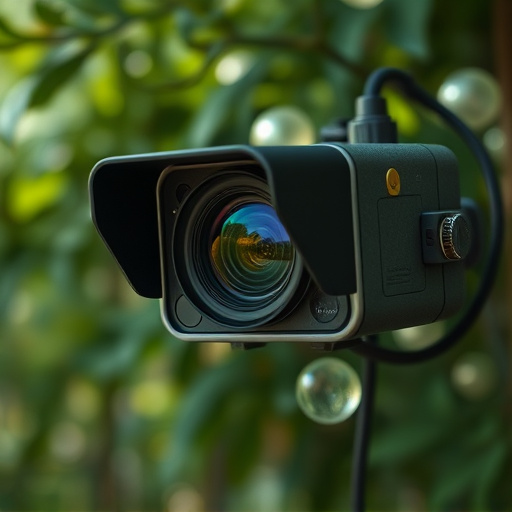The Remote Viewing Nanny Surveillance System leverages advanced optical sensors for real-time remote monitoring of sensitive environments. These sensors detect light, heat, movement, and changes, offering discrete observation through high-resolution cameras, night vision, and motion detection. Integrated into home networks, the system allows access via apps on smartphones or tablets, providing alerts, two-way audio, cloud storage for backup, and privacy through event-triggered recording. This technology enhances childcare surveillance while preserving personal space.
Uncover the power of remote optical sensor technology, a game-changer in modern surveillance. This article explores advanced methods for professional implementation, particularly focusing on nanny surveillance systems. Learn how these sensors provide enhanced privacy and efficiency, allowing remote viewing and real-time monitoring. Discover strategic approaches to integrating this cutting-edge technology, ensuring both safety and discretion. From understanding the fundamentals to mastering installation, this guide covers all aspects of optical sensor detection for informed decision-making.
- Understanding Remote Optical Sensor Technology
- Implementation Strategies for Nanny Surveillance
- Enhancing Privacy and Efficiency in Surveillance Systems
Understanding Remote Optical Sensor Technology
Remote optical sensor technology has revolutionized various fields, including professional surveillance and remote viewing. A Remote Viewing Nanny Surveillance System, for instance, employs advanced sensors to capture and transmit visual data from a distance, offering a discrete and effective monitoring solution. These sensors can detect light, heat, movement, and other environmental factors, enabling real-time observation without the need for physical presence.
This technology leverages the power of optics, often incorporating infrared or thermal imaging capabilities, to penetrate darkness and obscure conditions. By analyzing visual patterns and changes in light intensity, remote optical sensors provide valuable insights, making them indispensable tools for professionals in fields like security, wildlife monitoring, and environmental science.
Implementation Strategies for Nanny Surveillance
Implementing a remote viewing nanny surveillance system requires careful strategy and consideration. One key approach is to leverage advanced optical sensor technology, such as high-resolution cameras with night vision capabilities and motion detection features. These components enable continuous monitoring while ensuring privacy by only recording specific events triggered by movement or unusual activity.
For effective deployment, the system should be integrated into existing home networks, allowing for real-time remote access through secure apps on smartphones or tablets. Caregivers can remotely view feeds, receive alerts, and interact with the environment using two-way audio features. Additionally, cloud storage options ensure data backup and facilitate review of historical footage, enhancing overall surveillance efficiency.
Enhancing Privacy and Efficiency in Surveillance Systems
Modern surveillance systems have evolved significantly, incorporating advanced optical sensor detection techniques that offer enhanced privacy and efficiency. One notable application is the remote viewing nanny surveillance system, where parents or caregivers can monitor children’s activities from a distance. This technology allows for real-time observation of environments both indoors and outdoors, ensuring safety without compromising on personal space.
By leveraging professional methods of optical sensor detection, these systems capture high-resolution images and videos, enabling users to zoom in for detailed inspection. This feature is particularly useful in identifying potential hazards or unusual behaviors, thereby increasing the overall efficiency of surveillance. Moreover, advanced encryption techniques ensure that all data transmitted from the remote viewing system remains secure and private, addressing concerns about data privacy in the digital age.
Optical sensor technology, with its ability to remotely view and monitor environments, has revolutionized nanny surveillance systems. By understanding and implementing professional methods of remote optical sensor detection, parents can enhance both privacy and efficiency in their home surveillance. These advanced techniques ensure that while child care is optimized, personal spaces remain secure, making it a game-changer for modern family dynamics.
